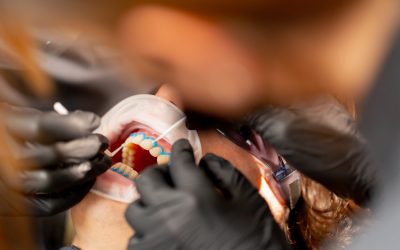July 19, 2024
Dr. Andres de Cardenas
All-on-4 dental implants, cosmetic bonding, Cosmetic Dental Care Services, cosmetic dentist Miami, Cosmetic Dentist Whitening, Cosmetic Dentistry, Daily Health Tips, dental care, Dental Care Tips, Dental Cleaning Appointment, Dental Implant Procedure, dental solutions, Dentist Appointment, family dental Care dentist, Family Dentist, FL, healthy teeth, Natural teeth whitening, Oral Cancer, Oral Care, professional denstists, Smile Makeover, Teeth Alignment, Teeth discoloration, Teeth Whitening, teeth whitening sensitive teeth, The Miami Cosmetic Dentist
Family Dental Care Miami | Miami Cosmetic Dentist > Blog > Blog - Category > Avoid Painful Dry Socket With These Helpful Tips!
Avoid Painful Dry Socket With These Helpful Tips!

Dry Socket
Tooth extractions aren’t exactly an enjoyable experience, but as long as the procedure is done correctly, the recovery should be relatively simple and painless. Have you had a tooth removed recently? If you are beginning to come across unusual pain that does not seem to subside days after the procedure, it is possible that you are experiencing symptoms of Dry Socket that may require further medical attention.
Extractions are typically necessary when wisdom teeth breach the gums and cause movement or when a tooth is causing issues in the mouth. These teeth are surgically removed, requiring an incision in the gum. Before the surgery for Wisdom Teeth Removal, you are placed under either local or general anesthesia, depending on the severity of the case and the total number of teeth that are being removed in one sitting.
It may seem like an intimidating time, but our experts with Dr. Andres de Cardenas do everything within their power to make your Dental Extraction as seamless as possible. During the procedure, any bleeding and existing pain or discomfort are carefully managed. Once the tooth extraction is complete, you will be sent home to recover with set directions and tools to keep the site clean and healing correctly.
However, there is always a chance that complications may occur. One common condition is known as Dry Socket. Also referred to as alveolar osteitis, this condition typically only occurs in a very small percentage of patients after a Dental Extraction, which can be anywhere from 2% to 5% of individuals. For those unlucky few that may come across this issue, much pain and discomfort are typically experienced.
Best Treatment for Dry Socket
The hole in the bone in which the tooth is extracted from is what is known as the “socket.” Blood clots form in the socket after a tooth is removed to protect the nerves and bone itself underneath. If that blood clot dissolves or dislodges from its place, you run the risk of exposing the bone to food, air, fluids, and any bacteria that comes in contact with the mouth. That bacteria can then be the source of severe infection and pain.
The symptoms associated with Dry Socket typically subside after 5 to 6 days. If you are an individual who smokes, has poor oral hygiene, takes birth control pills, or already has a history of experiencing Dry Socket, your chances of developing this condition are much higher than for those who do not. It is best to inform your medical professional of these factors prior to going in for your dental extraction in order to take precautionary measures.
If you are unsure if your symptoms are tied to Dry Socket, there are specific signs you can look out for. The easiest way to tell if you have Dry Socket is by taking a close look in the mirror. Carefully inspect the incision site and determine whether the opening of where your tooth was pulled is covered by a dark or white spot. If the area is darkly colored, the bone is still being protected by a blood clot. If it is white, the bone is exposed, and you now have the dreaded Dry Socket.
How to Treat Dry Socket at Home
To treat Dry Socket, it is best to take anti-inflammatory pills, such as ibuprofen or aspirin. Taking anti-inflammatory medication will ease the pain and discomfort until the symptoms subside on their own. If the pain persists for several days, a visit to your dentist may be necessary in order to prescribe stronger, prescription medication.
Visit one of the best dentists in South Florida and schedule an appointment with Dr. Andres de Cardenas today! Give us a call at (305) 251-3334 or click here for more information on the causes of Dry Socket and how you can avoid it after your Dental Extraction.
Get In Touch With Us
Recent Posts
- Bright Smiles, Brighter Futures: Why Cosmetic Dentist Whitening Is Worth It
- Safeguard Your Smile: Family Dental Care Dentist Debunks DIY Dentistry Tips!
- Dental Implant FAQs: What to Know About the Recovery Process
- The Health Benefits Of Cosmetic Dental Care Services: Beyond Vanity
- The Ultimate Cosmetic Dental Checklist For Miami, FL Residents
Related articles
July 5, 2024
Dr. Andres de Cardenas
All-on-4 dental implants, cosmetic bonding, Cosmetic Dental Care Services, cosmetic dentist Miami, Cosmetic Dentistry, Daily Health Tips, dental care, Dental Care Tips, Dental Cleaning Appointment, Dental Implant Procedure, dental implant recovery, dental implants, dental solutions, Dentist Appointment, family dental Care dentist, Family Dentist, FL, healthy teeth, Oral Cancer, Oral Care, professional denstists, Smile Makeover, Teeth Alignment, Teeth discoloration, Teeth Whitening, The Miami Cosmetic Dentist
Safeguard Your Smile: Family Dental Care Dentist Debunks DIY Dentistry Tips!
June 21, 2024
Dr. Andres de Cardenas
All-on-4 dental implants, cosmetic bonding, Cosmetic Dental Care Services, cosmetic dentist Miami, Cosmetic Dentistry, Daily Health Tips, dental care, Dental Care Tips, Dental Cleaning Appointment, Dental Implant Procedure, dental implant recovery, dental implants, dental solutions, Dentist Appointment, Family Dentist, FL, healthy teeth, Oral Cancer, Oral Care, professional denstists, Smile Makeover, Teeth Alignment, Teeth discoloration, Teeth Whitening, The Miami Cosmetic Dentist


